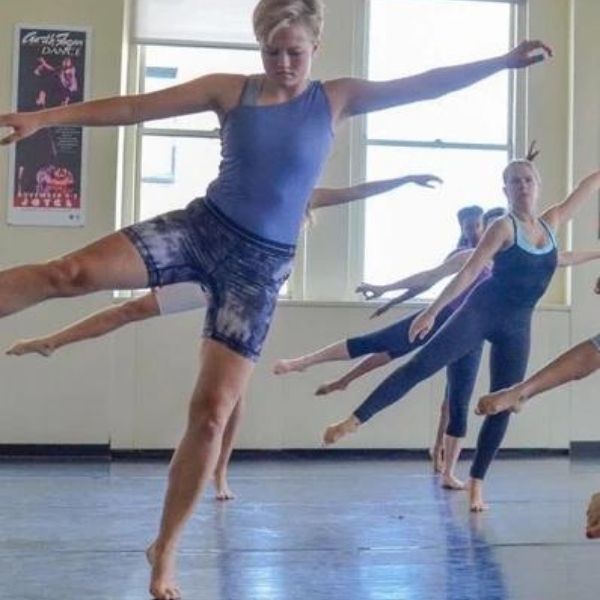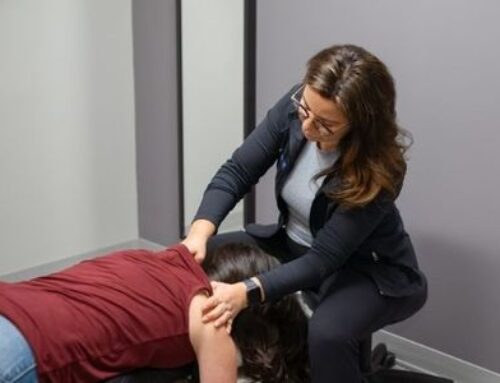Welcome back to the dancer blog! Recently we wrapped up our discussion on why it’s so hard for healthcare providers to understand dancers. Make sure to check out Part 1, Part 2 and Part 3 here! This week we’re transitioning onto our new series on understanding common dance injuries. During this series we will be looking at various kinds of injuries that affect dancers as well as discuss ways that you can recognize these injuries yourself, how these injuries occur and what treatment might look like. To kick things off we’re going to be looking at the Os Trigonum.
So what is an Os Trigonum exactly? Well simply put, it’s an extra bone that can form in the posterior part of your ankle. As you may or may not know, when we are born we do not actually possess a traditional skeleton. Babies are born with a cartilage skeleton rather than one made out of bone. As we age, our cartilaginous skeleton slowly converts to a bony one. This is called ossification. Fun fact, the average human skeleton is not fully converted to bone until about age 25! So if you’re 25 or younger, there’s a good chance you still have portions of your skeleton that aren’t bone yet.
So how does an Os Trigonum form. Often, an Os Trigonum develops during puberty. As the body continues to ossify converting its cartilage skeleton to bone, a process that speeds up during puberty, some bones may fail to convert properly. In the case of the Talus, the bone that makes up much of the mass that we call our ankle, when the posterior portion of the bone ossifies but fails to connect with the anterior portion of the bone, a second smaller bone is the result. This is the Os Trigonum.
Ok medical science aside, why should dancers know about the Os Trigonum? Well, generally speaking, an Os Trigonum is pretty insignificant. They can occur in either one or both ankles but are uncommon and even when they do occur, many people never even realize that they have them. This is because they aren’t very big. So even when walking and running, it’s not likely that this extra bone will rub up against anything it shouldn’t. Of course this is for “normal” people and as we’ve discussed here from the beginning, dancers are far from “normal!”
The biggest difference here is that dances often point their feet to extreme degrees and often do so while placing their body weight over the balls of the feet. This is true of any dancer who utilizes the relevé position and is especially true of dancers who work en pointe. In these positions the Os Trigonum is literally crushed between the heel of the foot and the ankle. This is known as a “Nutcracker” injury. I know, the one time medicine makes a funny dance reference and it’s not even intentional! This injury often results in inflammation and swelling to the surrounding soft tissues on the posterior ankle: what’s known as Os Trigonum Syndrome.
In extreme cases, an Os Trigonum can grind against the surrounding soft tissues such as muscless and tendons which can result in tearing and fraying. Over time, this condition can cause permanent damage, especially to those who dance en pointe. Remember my friend (Dancer Blog: Why Telling Dancers To Stop Does’t Work) who had an ankle surgery and was told she would never dance again? An Os Trigonum was believed to be the culprit. Because of this, an Os Trigonum is actually one of the rare cases where I would instruct a dancer to stop dancing en pointe or in any relevé like positions until they were treated.
Ok so what is the treatment for an Os Trigonum. Normally, not much. Most people who have this extra bone, never know it. Or, they may get an incidental nutcracker injury and in that case; ice, compression and elevation will generally take care of it. Not dissimilar to an ankle sprain really. However, in the case of dancers and other athletes such as soccer players and runners, surgery is often the treatment that yields the most benefit long term.
That’s right I said surgery. I don’t know why but for some reason Chiropractors tend to get branded as being against surgery. The reality is that we’re against unnecessary surgery. And that shouldn’t be a novel idea, all GOOD healthcare providers should try and avoid surgery as long as they can. That said, some conditions really do require surgical intervention. Now this isn’t to say that if you discover that you have an Os Trigonum that you should immediately schedule a surgery. But, if you are experiencing pain, swelling and ongoing damage to your soft tissues, then surgery is likely to fix this.
Fortunately, surgery for an Os Trigonum is pretty simple. The Orthopedic surgeon will make an incision on the side of the ankle and extract the extra bone as well as clean up any residual connective tissue that may have formed around the Os Trigonum. The recovery time for this procedure is typically around 6 weeks. The most important part of recovery for any dancer is going to be rehabilitation and mobilization. Following surgery it is paramount that we maintain a full range of motion as well as work to strengthen and stabilize the ankle joint. Otherwise, scar tissue and general disuse can lead to limited functionality in the ankle which for a dancer is a huge no no!
And here we find ourselves once again discussing the importance of having a healthcare provider who understands a dancer’s need as an athlete. Strength and conditioning for dancers following Os Trigonum surgery needs to target not just general rehabilitation of the ankle joint, but dance specific rehabilitation as well. Failing to address the joint in a way that prepares it for dance based movements specifically can really be detrimental to the dancer’s longevity as a performer.
Whenever a surgery is performed, the affected area always undergoes scar formation. This is a time sensitive process that can ultimately affect how that joint works in the future. Breaking up scar tissue post surgery and making sure the affected area is properly conditioned will be the difference between an ankle that feels better than before and one that while hurting less, doesn’t get the same range of motion. REHAB NEEDS TO BE SPECIFIC TO DANCE! So if you or a dancer you love needs care and wants a provider who understands their needs and goals, call and set up an appointment today!
Ok time for our dancer shout out! This week we have Sarahfina Wipf. Sarafina’s been dancing since she was six years old. She graduated Magna Cum Laude with a Bachelors in Arts in Dance and is trained in a variety of dance styles including modern, afro-caribbean and jazz dance. She grew up dancing here in Rochester at the Garth Fagan Dance School where she held a position in the student dance ensemble and performed in multiple premiere works by Fagan himself. Fun fact, Sarafina is also studying to become a Doctor of Chiropractic and plans on providing quality care to dancers once she is in practice. I’ve known Sarahfina for several years now and she’s an amazing woman and leader within the profession. Keep an eye out for her when she graduates next year!
And remember, if you have any questions or topics you would like me to address here on the Dancer Blog comment below and let me know! Also if you want to help this community grow faster, please like and share this blog on Facebook, Instagram, and Twitter. And make sure to tune in next week when we break down the all too common ankle sprain. Until next time!






Hi, Can I just say what a relief to find someone who actually knows what theyre talking about on the internet. You definitely know how to bring an issue to light and make it important. More people need to read this and understand this side of the story. I cant believe youre not more popular because you definitely have the gift.